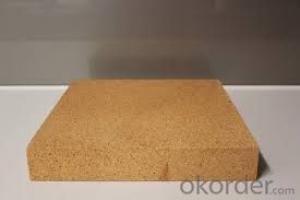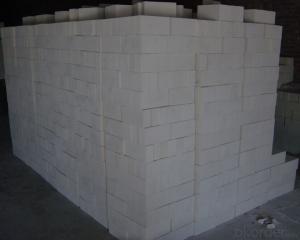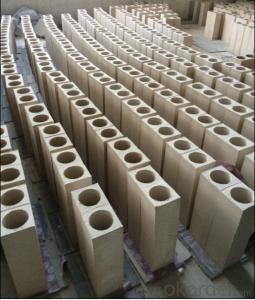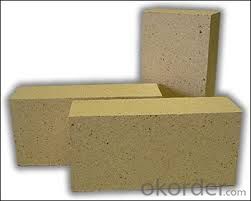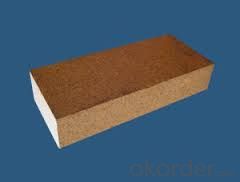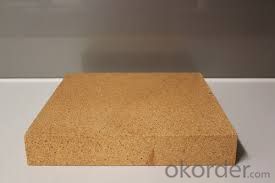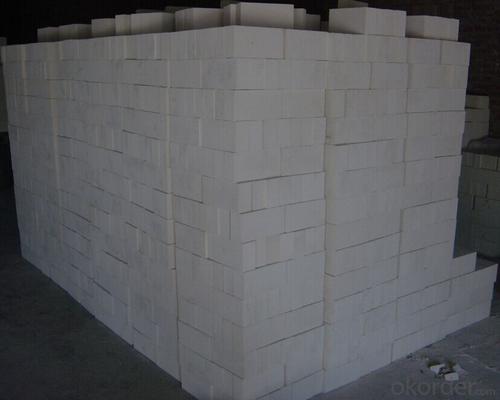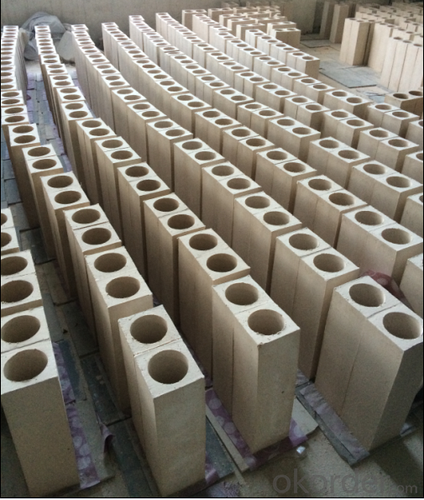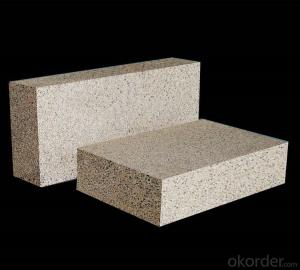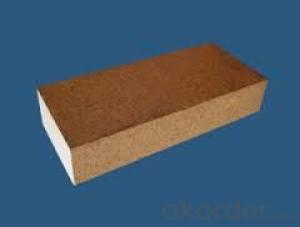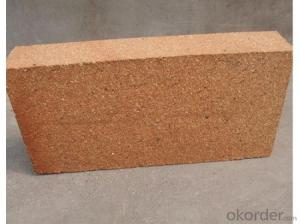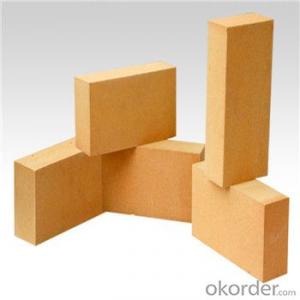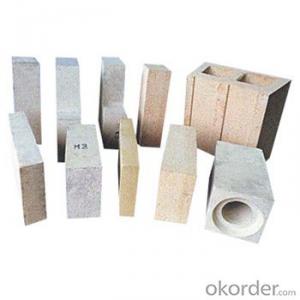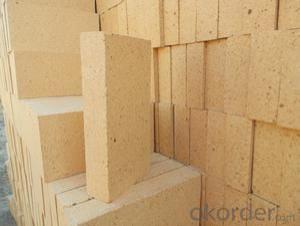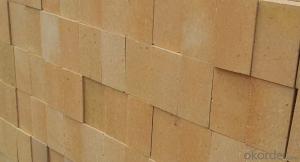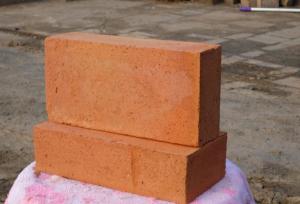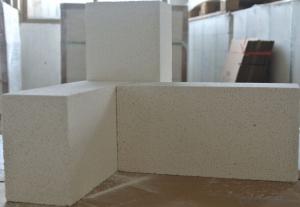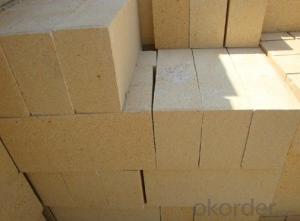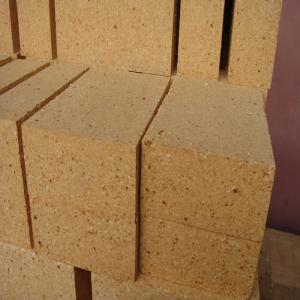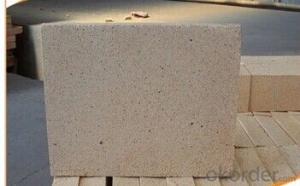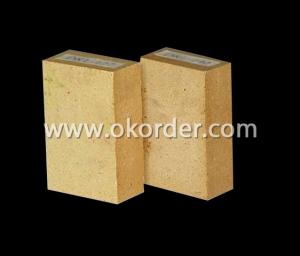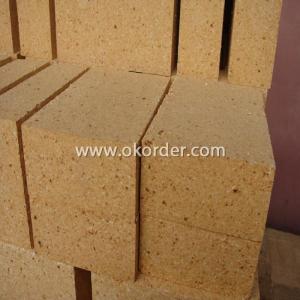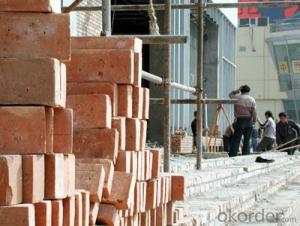Fireclay Brick for Nonferrous Metals Refractory Brick
- Loading Port:
- Qingdao
- Payment Terms:
- TT OR LC
- Min Order Qty:
- 2 m.t
- Supply Capability:
- 5000 m.t/month
OKorder Service Pledge
OKorder Financial Service
You Might Also Like
Brief discription for Clay brick of refractory brick for Nonferrours Metals
CMAX Clay brick of refractory brick for Nonferrours Metals are classified according to alumina content ranging from 48% to 90%.
CMAX Clay brick of refractory brick for Nonferrours Metals are commonly used in blast furnace, hot blast furnace, the roof of electric furnace, teeming ladle, rotary kiln,regenerator, etc.
Brief features for Clay brick of refractory brick for Nonferrours Metals
◆Low thermal conductivity
◆Excellent acid and base slagging resistance
◆High refractoriness
◆Excellent thermal shock resistance
◆Excellent mechanical strength
◆Good spalling resistance and wear resistance.
◆Good corrosion resistance.
◆High-temperature creep rate is quite low.
◆Good volume stability at high temperature.
◆Low bulk density, low thermal conductivity, good thermal insulation performance.
Technical data for Clay brick of refractory brick for Nonferrours Metals
ITEM | UAL48 | UAL55 | UAL65 | UAL75 | UAL80 | UAL85 | ALP80 |
Refractoriness, ℃ | 1750 | 1770 | 1790 | 1790 | 1810 | 1810 | 1810 |
Apparent Porosity,% | 22 | 22 | 23 | 23 | 20 | 20 | 18 |
C.C.S, Mpa | 39 | 44 | 49 | 53 | 55 | 60 | 100 |
Refractories Under Load (0.2Mpa),℃ | 1420 | 1470 | 1500 | 1520 | 1500 | 1520 | 1550 |
Reheating Linear Change,% | 1450℃x2h 0.1~-0.4 | 1500℃x2h 0.1~-0.4 | 1500℃x2h 0.1~-0.4 | 1500℃x2h 0.1~-0.4 | 1550℃x2h -0.5~+0.5 | 1550℃x2h -0.5~+0.5 | 1550℃x2h -0.5~+0.5 |
Al2O3 Content , % | 48 | 55 | 65 | 75 | 80 | 85 | 82 |
FAQ
Q1:Are you a manufacture or trader?
A:Factory+trade(mainly factories,at the same time,we operates other related products).
Q2:Can we visit your factory?
A:Sure,welcome at any time,seeing is believing.
Q3:What's the MOQ of trial order?
A:No limit,We can offer the best suggestions and solutions according to your condition.
Q4:Which payment terms can you accept?
A:T/T,L/C are available for us.
Q5:After an order is confirmed,when to deliver?
A:15-25days after deposit.
- Q: Do you use ceramic as offal material for refractory bricks?
- Use special clinker of bauxite with high alumina as main ingredient, pulp, K2O < 0, the main component is Al2O3 which is more than 18%, it is a kind of neutral refractory material, pyrophyllite fine powder doesn't need refractory brick production process, Fe2O3 < 1, grinding - mixing - molding - sintering - packaging - delivery. A.3%.3%, Fe2O3 < 0, molding and calcined from bauxite or other raw materials with high content oxides, combined with clay, K2O < 0.5%; 3: 2, raw materials 1; 4: 325 mesh.0%:
- Q: What are the differences between thermal?insulation?bricks and refractory bricks?
- Thermal insulation brick is thermal insulative; refractory brick is high temperature resistant.
- Q: General used refractory brick T-20 / T-39/ T-206 specifications and dimension
- No T-206 model (we produce the clay) T-20 and T-39 are the size of 230*length, 113* width and 65/45 thickness, T-20 is a vertical arch brick and T-39 is horizontal arch brick.
- Q: Whether the fire bricks are needed to be poured before construction?
- Refractory bricks do not absorb water, do not need to water, what's more, refractory bricks need special refractory mortar to build. Refractory brick is used in the high temperature furnace, you won't use it to build walls.
- Q: What are the type, location and the physical and chemical effects of the refractory brick used in the cement rotary kiln?
- But most people use high alumina brick or clay brick, G6 refractory brick. The specific masonry location, such as G4 refractory brick, standard brick, T38, OD, T39, according to the length of your rotary kiln, many kinds of refractory bricks are used in cement rotary kiln, the specific size of the inner diameter should be calculated in detail
- Q: What is the density of the high alumina refractory brick?
- According to the quality, the general level is two point four to two point seven or so
- Q: The difference between fireclay brick and refractory cilica brick in the application.
- Good thermal shock stability, long-term use temperature is not higher than 1300 degrees, high temperature, high strength, low price of clay brick characteristics, thermal shock stability is the worst, a scrap, can be long-term used under the condition of high temperature (exceed 1400 degrees Celsius) . The temperature of silica brick's soft bearing is close to the melting point. Other industries basically don't use, but the comprehensive performance of high temperature is not good, widely used in low temperature parts of a variety of furnaces. The silica brick is generally used in the coke oven and glass kiln, but anti alkali erosion ability is poor
- Q: How to prevent high alumina refractory brick from producing crack when reproduce high alumina refractory brick?
- 1-1, on the 1 in order to prevent the emergence of crack in the production of high alumina refractory brick. 2 is appropriate, the water absorption rate of the tube mill should be controlled below 6%, the excess air coefficient controlled between level 1 and 2. The water absorption rate of clinker of bauxite with high alumina controlled under 4%-5%, making the high aluminum refractory brick burning in a smoothly and steadily weak oxidation atmosphere, and should be adjusted by thermotechnic
- Q: Why is there cracks in the use of refractory bricks?
- Several reasons for the emergence of cracks: (1) temperature difference stress (2) mechanical stress (3) crystal type change stress
Send your message to us
Fireclay Brick for Nonferrous Metals Refractory Brick
- Loading Port:
- Qingdao
- Payment Terms:
- TT OR LC
- Min Order Qty:
- 2 m.t
- Supply Capability:
- 5000 m.t/month
OKorder Service Pledge
OKorder Financial Service
Similar products
Hot products
Hot Searches
Related keywords


